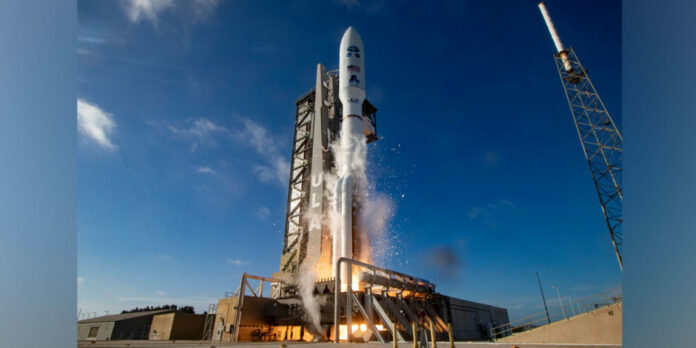An Alabama-made United Launch Alliance (ULA) Atlas V rocket carrying the GOES-T spacecraft for the National Oceanic and Atmospheric Administration (NOAA) and NASA lifted off this week from Cape Canaveral. To date, ULA has launched 149 times with 100% mission success.
In a release, the company expressed gratitude for its mission partners.
“Thank you to NASA, NOAA and our mission partners for your teamwork to launch this important mission. This successful launch adds to the GOES-R series, the Western Hemisphere’s most sophisticated weather observation and environmental monitoring system,” said Gary Wentz, ULA vice president of Government and Commercial Programs.
“The Atlas V delivered GOES-T directly to a geosynchronous transfer orbit. The orbital delivery accurately placed the spacecraft closer to its final destination which conserves the satellite’s fuel supply and enables a longer mission life,” added Wentz.
The mission launched on an Atlas V 541 configuration rocket, which first flew in November 2011 with NASA’s Mars Curiosity rover. This configuration has launched missions for the National Reconnaissance Office, carried the GOES-R and -S satellites into space, and most recently launched the Mars 2020 mission with the Perseverance rover and Ingenuity helicopter.
Built at ULA’s 1.6 million square foot facility in Decatur, the Atlas V 541 included a 17-ft (5-m) diameter short payload fairing. The Atlas booster for this mission was powered by the RD AMROSS RD-180 engine. Aerojet Rocketdyne provided the RL10C-1 engine for the Centaur upper stage and Northrop Grumman provided the Graphite Epoxy Motor (GEM) 63 solid rocket boosters.
This was the 92nd launch of an Atlas V rocket and 22nd mission launched on an Atlas V in partnership with NASA’s Launch Services Program (LSP). ULA’s next launch is USSF-12 for the U.S. Space Force from Cape Canaveral Space Force Station, Florida.
Don’t miss out! Subscribe to our email newsletter to have all our smart stories delivered to your inbox.



